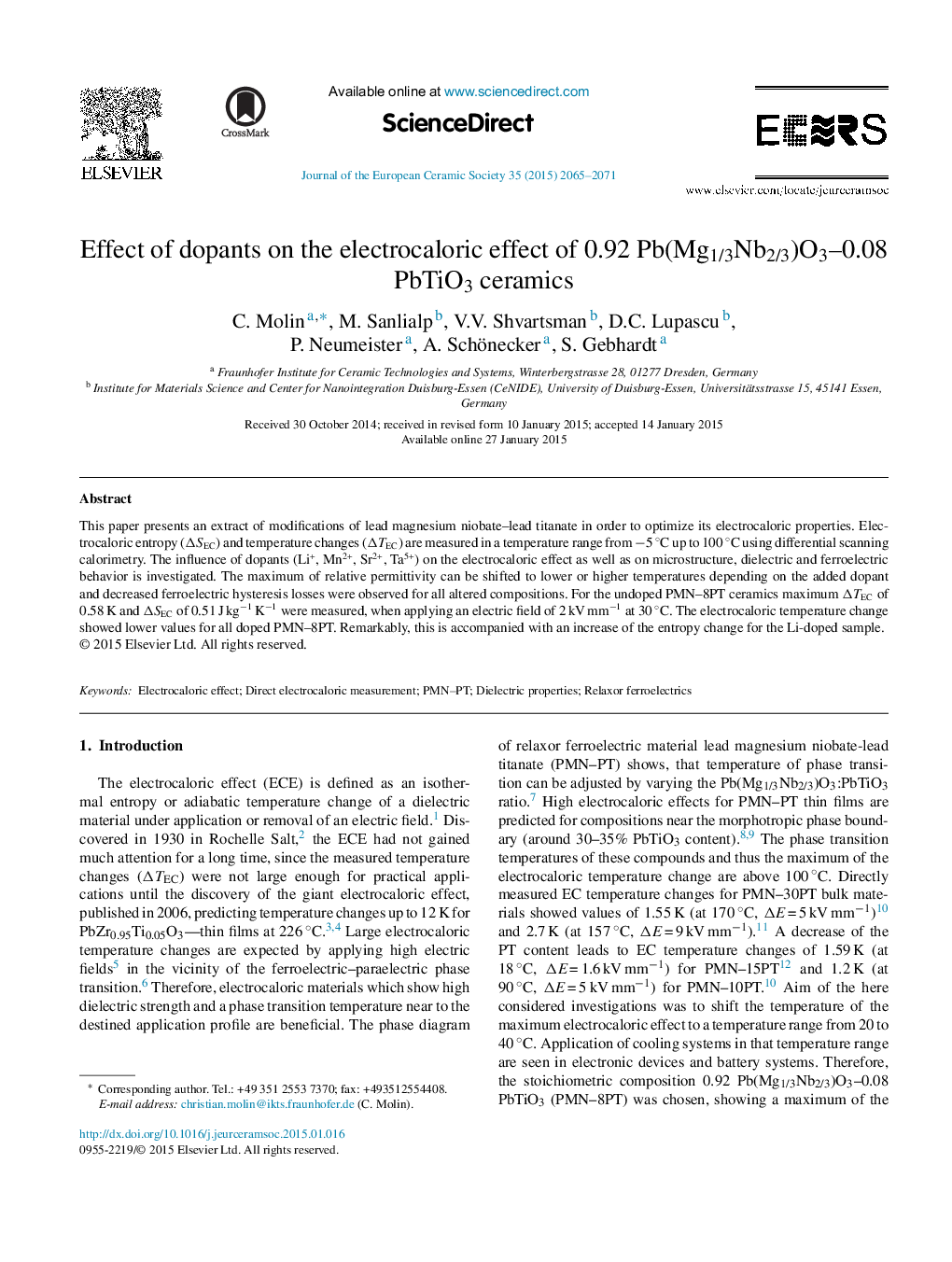| Article ID | Journal | Published Year | Pages | File Type |
|---|---|---|---|---|
| 1474077 | Journal of the European Ceramic Society | 2015 | 7 Pages |
This paper presents an extract of modifications of lead magnesium niobate–lead titanate in order to optimize its electrocaloric properties. Electrocaloric entropy (ΔSEC) and temperature changes (ΔTEC) are measured in a temperature range from −5 °C up to 100 °C using differential scanning calorimetry. The influence of dopants (Li+, Mn2+, Sr2+, Ta5+) on the electrocaloric effect as well as on microstructure, dielectric and ferroelectric behavior is investigated. The maximum of relative permittivity can be shifted to lower or higher temperatures depending on the added dopant and decreased ferroelectric hysteresis losses were observed for all altered compositions. For the undoped PMN–8PT ceramics maximum ΔTEC of 0.58 K and ΔSEC of 0.51 J kg−1 K−1 were measured, when applying an electric field of 2 kV mm−1 at 30 °C. The electrocaloric temperature change showed lower values for all doped PMN–8PT. Remarkably, this is accompanied with an increase of the entropy change for the Li-doped sample.
